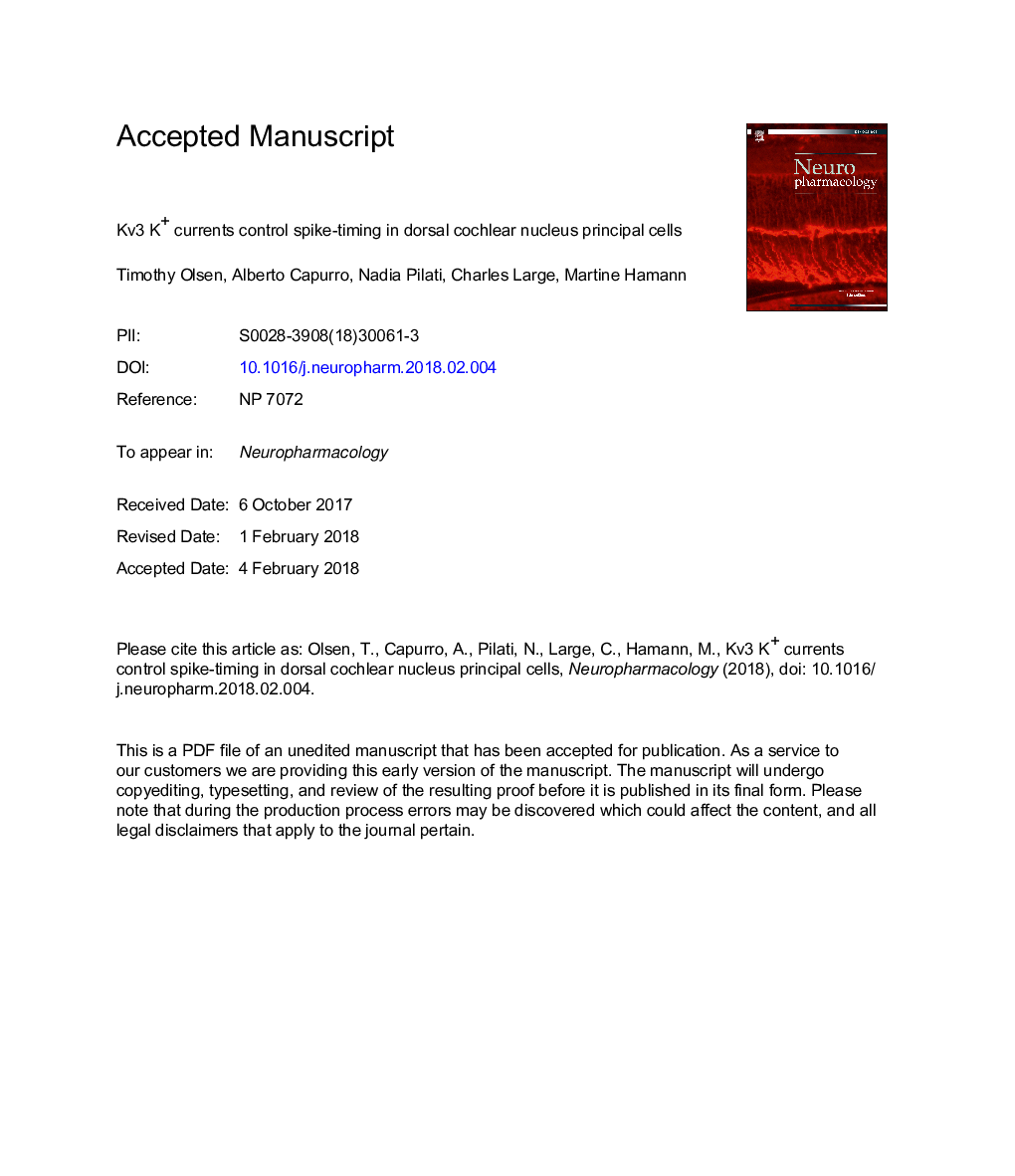| کد مقاله | کد نشریه | سال انتشار | مقاله انگلیسی | نسخه تمام متن |
|---|---|---|---|---|
| 8517039 | 1556584 | 2018 | 42 صفحه PDF | دانلود رایگان |
عنوان انگلیسی مقاله ISI
Kv3 K+ currents contribute to spike-timing in dorsal cochlear nucleus principal cells
دانلود مقاله + سفارش ترجمه
دانلود مقاله ISI انگلیسی
رایگان برای ایرانیان
کلمات کلیدی
موضوعات مرتبط
علوم زیستی و بیوفناوری
علم عصب شناسی
علوم اعصاب رفتاری
پیش نمایش صفحه اول مقاله

چکیده انگلیسی
Exposure to loud sound increases burst-firing of dorsal cochlear nucleus (DCN) fusiform cells in the auditory brainstem, which has been suggested to be an electrophysiological correlate of tinnitus. The altered activity of DCN fusiform cells may be due to down-regulation of high voltage-activated (Kv3-like) K+ currents. Whole cell current-clamp recordings were obtained from DCN fusiform cells in brain slices from P15-P18 CBA mice. We first studied whether acoustic over-exposure (performed at P15) or pharmacological inhibition of K+ currents with tetraethylamonium (TEA) affect fusiform cell action potential characteristics, firing frequency and spike-timing relative to evoking current stimuli. We then tested whether AUT1, a modulator of Kv3 K+ currents reverses the effects of sound exposure or TEA. Both loud sound exposure and TEA decreased the amplitude of action potential after-hyperpolarization, reduced the maximum firing frequency, and disrupted spike-timing. These treatments also increased post-synaptic voltage fluctuations at baseline. AUT1 applied in the presence of TEA or following acoustic over-exposure, did not affect the firing frequency, but enhanced action potential after-hyperpolarization, prevented the increased voltage fluctuations and restored spike-timing. Furthermore AUT1 prevented the occurrence of bursts. Our study shows that the effect on spike-timing is significantly correlated with the amplitude of the action potential after-hyperpolarization and the voltage fluctuations at baseline. In conclusion, modulation of putative Kv3 K+ currents may restore regular spike-timing of DCN fusiform cell firing following noise exposure, and could provide a means to restore deficits in temporal encoding observed during noise-induced tinnitus.
ناشر
Database: Elsevier - ScienceDirect (ساینس دایرکت)
Journal: Neuropharmacology - Volume 133, 1 May 2018, Pages 319-333
Journal: Neuropharmacology - Volume 133, 1 May 2018, Pages 319-333
نویسندگان
Timothy Olsen, Alberto Capurro, Nadia Pilati, Charles H. Large, Martine Hamann,